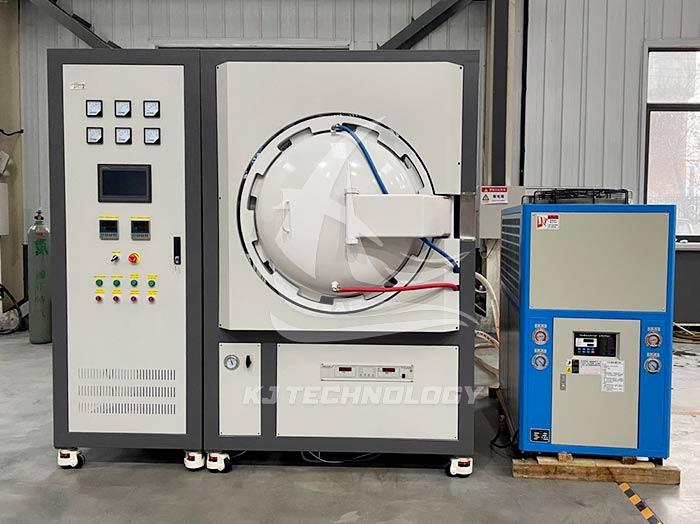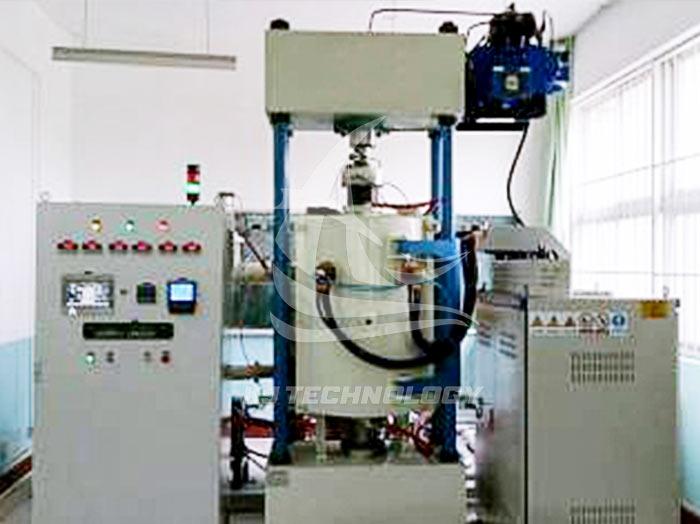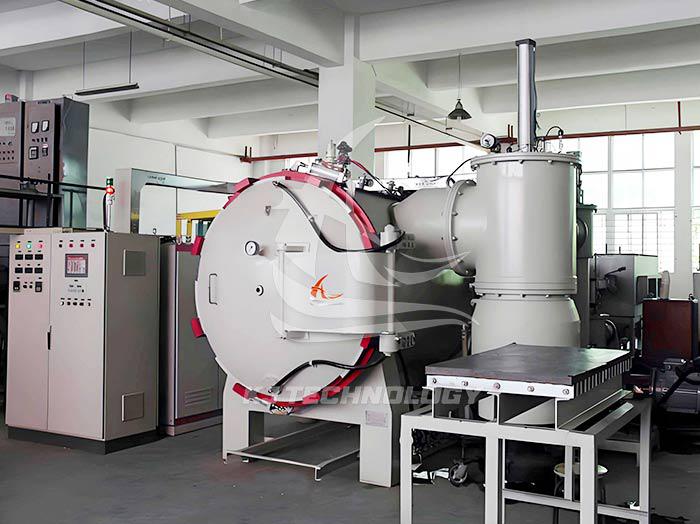Daily maintenance of atmosphere vacuum sintering furnace
 05-29-2025 Author: KJ technology
05-29-2025 Author: KJ technology
As a high-precision heat treatment equipment, the daily maintenance of the atmosphere vacuum sintering furnace directly affects the equipment life, sintering quality, and production safety. Below are five modules for cleaning and maintenance, mechanical component inspection, electrical system maintenance, vacuum system maintenance, and safety device testing, providing practical maintenance plans:
1. Cleaning and maintenance
a. Furnace cleaning
Residue treatment:
After each sintering, wait for the furnace to cool to ≤ 80 ℃ and use a vacuum cleaner or dust-free cloth to remove powder, oxides, and other residues.
Stubborn stains: Wipe with alcohol or specialized cleaning agents (such as isopropanol) to avoid corroding furnace materials (such as graphite and molybdenum).
Regular deep cleaning:
Perform furnace degassing treatment once a quarter (vacuum baking at 200 ℃ for 4 hours) to remove adsorbed impurity gases.
b. Seal maintenance
Inspection frequency: Check the sealing rings (such as fluororubber and metal O-rings) of the furnace door, observation window, and gas interface every month.
Replacement standard: When the sealing ring has hardened, cracked, or compressed deformation greater than 10%, it needs to be replaced immediately.
c. Gas pipeline cleaning
Daily operation: After sintering, continue to introduce inert gas (such as argon) for 10 minutes to blow off residual gas.
Annual maintenance: Disassemble gas pipelines, use ultrasonic cleaning machines to clean internal carbon or oxide deposits, and replace severely corroded pipelines.
2. Mechanical component inspection
a. Furnace door and lifting mechanism
Lubrication and maintenance:
Add high-temperature resistant grease (such as MOLYKOTE 33) to the furnace door hinges and guide rails every month to avoid sticking.
Apply molybdenum disulfide dry film lubricant to the lifting screw every quarter to reduce wear.
Calibration adjustment:
Check the parallelism between the furnace door and the furnace every six months, with an error of ≤ 0.5mm, to ensure sealing.
b. Vacuum pump maintenance
Daily operations:
Start the vacuum pump to preheat for 10 minutes before sintering, and continue running for 20 minutes after sintering to cool the pump body.
Daily discharge of condensate water from the vacuum pump oil mist separator.
Regular maintenance:
Oil quality inspection: Check the color of the vacuum pump oil monthly (transparent → cloudy needs to be replaced).
Filter replacement: Replace the intake filter and oil mist separator filter every 2000 hours.
Overhaul cycle: Disassemble the vacuum pump every 8000 hours and replace vulnerable parts such as blades and seals.
3. Electrical system maintenance
a. Heating element inspection
Appearance inspection: Check the heating wire and graphite heating element monthly for any breakage, deformation, or oxidation.
Resistance measurement: Use a multimeter to measure the resistance of the heating element every quarter, and replace it if the error is greater than 10%.
b. Temperature sensor calibration
Calibration frequency: Use a standard thermometer (such as platinum resistance) to calibrate the thermocouple every six months, with an error of ≤± 2 ℃.
Replacement standard: When the insulation layer of the thermocouple is damaged or the measured value drifts by more than 5 ℃, it needs to be replaced.
c. Control system maintenance
Software backup: Backup PLC programs and process parameters monthly to prevent data loss.
Hardware inspection: Check the contacts of contactors and relays for erosion every quarter and replace them if necessary.
4. Vacuum system maintenance
a. Vacuum degree detection
Daily testing: Conduct a no-load vacuum test before each sintering, and the vacuum degree should reach ≤ 5 × 10 ⁻ Pa within 30 minutes.
Leak detection: If the vacuum degree decreases, use a helium mass spectrometer leak detector to detect the furnace body, valves, and flange connections.
b. Valve maintenance
Action test: Manually operate vacuum valves (such as angle valves and plug valves) every month to ensure flexible switching.
Sealing replacement: The valve sealing ring should be replaced every 2 years to avoid leakage.
5. Safety device detection
a. Overtemperature protection
Functional testing: Simulate overheating faults every quarter to verify whether the heating system automatically shuts down.
Alarm threshold: Ensure that the over temperature alarm value is below the melting point of the material by more than 50 ℃.
b. Gas leakage alarm
Daily inspection: Test combustible gas alarms such as hydrogen and methane before starting each day, with a response time of ≤ 30 seconds.
Sensor calibration: Calibrate the sensor with standard gas every six months, with an error of ≤ ± 5% LEL.
c. Emergency stop device
Monthly testing: Press the emergency stop button to verify that all power, gas, and vacuum systems immediately stop.
6. Maintenance records and spare parts management
Maintenance ledger: Establish an electronic maintenance record table to record maintenance time, content, replacement parts, and personnel.
Spare parts inventory: Reserve key spare parts (such as heating elements, sealing rings, vacuum pump oil) with a stock level of ≥ 3 months of usage.
Supplier support: Sign maintenance agreements with equipment manufacturers to ensure response within 24 hours in case of major malfunctions.
Through the above systematic maintenance, the failure rate of the atmosphere vacuum sintering furnace can be significantly reduced (expected to reduce unplanned downtime by more than 60%), the equipment life can be extended (≥ 10 years), and the consistency of sintered products can be guaranteed (such as hardness fluctuation ≤± 1HRC).








